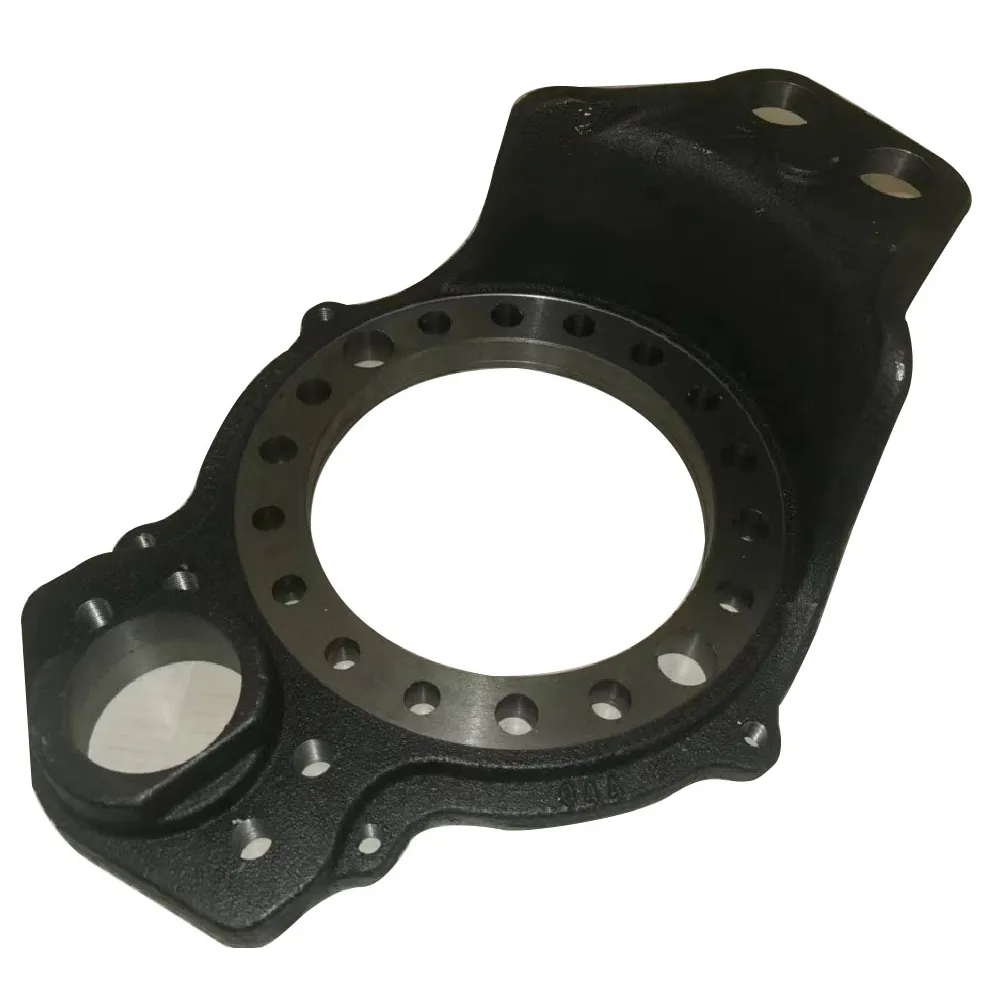✔ Supports Brake Shoes – Provides a rigid base for brake shoe attachment.
✔ Ensures Proper Alignment – Maintains correct positioning for even braking force.
✔ Distributes Braking Pressure – Helps evenly apply force to the drum.
✔ Resists Wear & Heat – Made from durable materials to withstand friction.
✔ Compatible with S-Cam Brakes – Commonly used in heavy-duty drum brake systems.
Depending on the vehicle and braking system, axle brake bottom plates come in different designs:
1. Standard Brake Bottom Plates
Used in most commercial drum brake systems.
Features anchor pin holes for brake shoe positioning.
2. Reinforced Heavy-Duty Plates
Thicker construction for high-load applications (mining, construction).
Often made from forged steel for extra durability.
3. Adjustable Brake Plates
Allows fine-tuning of brake shoe position for optimal contact.
4. OEM vs. Aftermarket Plates
OEM plates ensure perfect fitment but may be costlier.
Aftermarket plates offer budget-friendly alternatives with varying quality.
✔ High-Strength Materials: Cast iron or forged steel for maximum durability. Heat-treated to resist warping under extreme temperatures.
✔ Precision Machining: Accurate hole alignment for proper brake shoe mounting. Smooth surfaces to prevent premature wear.
✔ Corrosion Resistance: Coated with anti-rust treatments for longer lifespan.
✔ Compatibility: Designed to fit specific axle and brake configurations (e.g., Meritor, Bendix, WABCO).
✔ Rigidity & Stability: Maintains structural integrity under heavy braking forces.
Improved Braking Performance: Ensures even shoe-to-drum contact for consistent stopping power.
Longer Brake Life: Reduces uneven wear on brake shoes and drums.
Enhanced Safety: Prevents misalignment, reducing the risk of brake failure.
Reduced Maintenance Costs: Durable construction minimizes replacement frequency.
Better Heat Dissipation: High-quality materials handle extreme friction without warping.
Axle brake bottom plates are essential in:
1. Heavy-Duty Trucks & Trailers: Ensures reliable braking in long-haul transport.
2. Buses & Coaches: Provides stable braking in passenger vehicles.
3. Construction & Mining Equipment: Withstands harsh conditions in off-road machinery.
4. Agricultural Vehicles: Supports tractors and harvesters in demanding environments.
5. Military & Emergency Vehicles: Critical for high-performance braking in extreme conditions.
Mounting Surface – The plate is bolted to the axle flange, providing a stable base.
Brake Shoe Anchoring – Brake shoes are secured to the plate’s anchor pins.
Force Distribution – When brakes are applied, the plate ensures even pressure distribution.
Heat & Friction Resistance – The plate withstands high temperatures without deforming.
1. Vehicle Compatibility: Match the plate to your axle and brake system model (e.g., Rockwell, Dana, Hendrickson).
2. Material Quality: Forged steel > Cast iron for heavy-duty applications.
3. Load Capacity: Ensure the plate can handle your vehicle’s GVWR (Gross Vehicle Weight Rating).
4. OEM vs. Aftermarket: OEM guarantees fitment, while aftermarket may offer cost savings.
5. Corrosion Protection: Look for zinc or phosphate coatings in humid/salty environments.
Installation Guide:
Clean the Axle Flange – Remove rust and debris for a secure fit.
Check Bolt Torque – Follow manufacturer specs to avoid loosening.
Verify Brake Shoe Alignment – Misalignment causes uneven wear.
✔ Inspect Regularly – Look for cracks, rust, or warping.
✔ Lubricate Anchor Pins – Prevents sticking and uneven shoe movement.
✔ Replace Worn Plates – Don’t reuse damaged plates—safety first!
Uneven Brake Wear – Indicates misalignment.
Brake Noise (Squealing/Grinding) – Worn or warped plate.
Reduced Stopping Power – Poor shoe-to-drum contact.
Visible Cracks or Rust Damage – Structural weakness.
A high-performance axle brake bottom plate is vital for:
✔ Consistent braking power
✔ Longer brake system life
✔ Lower maintenance costs
✔ Enhanced vehicle safety





